- Neck Surgery

Neck surgery is a surgical procedure employed for the treatment of neck pain when conservative measures such as physical rehabilitation, medications, and rest have failed to provide any relief to your neck pain.
Know More - Posterior Cervical Decompression

Posterior cervical decompression is a surgical procedure performed through the back of the neck to relieve pressure over compressed nerves in the cervical spine region caused by inflamed spinal tissue or nerves, by removing portions of the cervical vertebrae.
Know More - Posterior Cervical Foraminotomy

Posterior cervical foraminotomy is a surgical procedure performed through the back of the neck to relieve symptoms of a pinched or compressed spinal nerve by enlarging the neural foramen, an opening for the nerve roots to exit the spine and travel through the body, and creating more space for the spinal nerve to pass through.
Know More - Disc Arthroplasty

Arthroplasty is a surgical procedure to restore joint function by replacing a damaged joint with an artificial joint called a prosthesis. It may be performed to replace the joints in the neck region of the spine. The vertebral bones of the spine are separated by soft discs, which can undergo injury or degeneration. Disc arthroplasty involves replacing these discs with artificial prostheses and is also called cervical disc replacement surgery.
Know More - Keyhole Foraminotomy

Foraminotomy is a surgical procedure performed to relieve the symptoms of a pinched or compressed spinal nerve by enlarging the neural foramen, an opening for the nerve roots to exit the spine and travel through the body. The neural foramen forms a protective passageway for nerves that transmit signals among the spinal cord and the rest of the body parts.
Know More - Cervical Arthroplasty
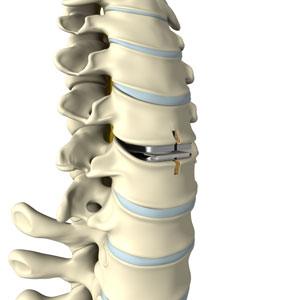
Arthroplasty is a surgical procedure to restore joint function by replacing a damaged joint with an artificial joint called a prosthesis.
Know More - Cervical Laminectomy
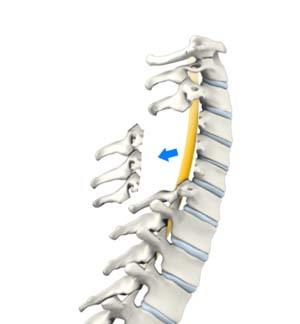
Laminectomy refers to the removal or cutting of the lamina (roof) of the vertebral bones to provide space for the nerves to exit from the spine.
Know More - Cervical Foraminotomy
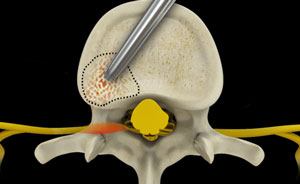
Cervical foraminotomy is a surgical procedure performed to relieve the symptoms of a pinched or compressed spinal nerve by enlarging the neural foramen, an opening for the nerve roots to exit the spine and travel through the body.
Know More - Cervical Spine Fusion
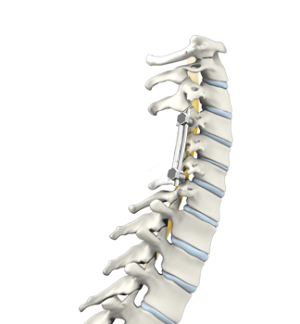
Cervical spine fusion is a surgery performed to fuse weak cervical vertebrae with adjacent vertebrae to provide stability and prevent injury to the spinal cord.
Know More - Posterior Cervical Fusion
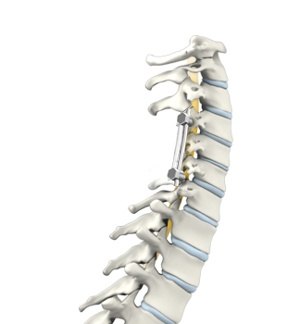
Posterior cervical fusion (PCF), a surgical procedure performed through the back of the neck, involves joining or fusing two or more damaged cervical vertebrae.
Know More - Posterior Cervical Laminectomy and Fusion

PCF may be employed for the management of cervical fractures, bone dislocations and deformities due to an abnormal curvature of the cervical vertebrae.
Know More - Cervical Laminoplasty
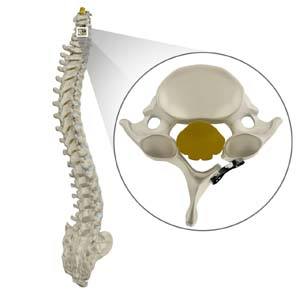
A cervical laminoplasty is an operative procedure that involves reshaping/repositioning the bone at the neck region (cervical spine) to relieve excess pressure on the spinal nerves. It can also be performed to relieve the symptoms of the narrowed spinal canal known as spinal stenosis.
Know More - Artificial Cervical Disc Replacement
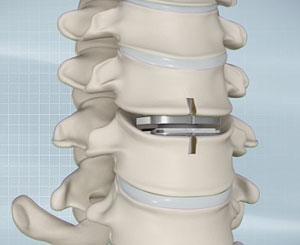
Artificial cervical disc replacement is a spine surgery to replace a degenerated (deteriorated) disc in the neck with an artificial disc. The artificial disc, like the natural healthy disc, is used to replace the degenerated disc. It restores the height between the two cervical vertebrae, enlarging the neural foramen (nerve passageway in the spine) and relieving the pressure on the spinal nerves. This stabilizes the cervical spine and restores normal mobility of the neck.
Know More Launch Movie - Cervical Corpectomy and Strut Graft
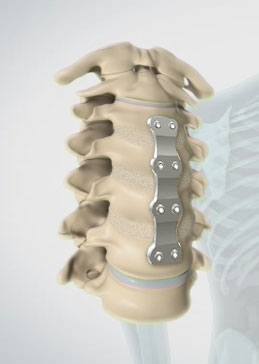
A cervical corpectomy and strut graft is a surgical procedure aimed at relieving the compression on the spinal cord by removing the degenerated vertebrae and replacing them with a bone graft.
Know More Launch Movie - Minimally Invasive Cervical Discectomy
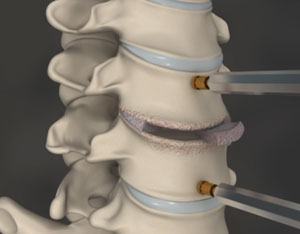
A cervical discectomy or decompressive spinal procedure is an operative procedure that relieves pressure on the spinal nerves and/or spinal cord by partially or completely removing the intervertebral disc that is herniated and/or bony material (bone spur). Cervical discectomy can be performed using a minimally invasive approach if you are suitable.
Know More - Anterior Cervical Discectomy with Fusion
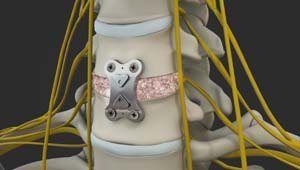
Anterior cervical discectomy with fusion is an operative procedure to relieve compression or pressure on nerve roots and/or the spinal cord due to a herniated disc or bone spur in the neck. The vertebra is approached from the from (anterior) of your neck.
Know More Launch Movie - Cervical Myelopathy
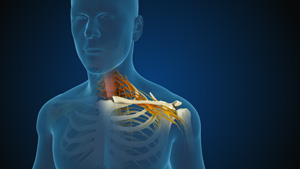
Cervical myelopathy is a disorder resulting from severe spinal cord compression in the cervical spine. The spinal cord in this region can become compressed as a result of bulging or herniated discs, spinal trauma, or spondylosis with arthritis and bone spurs causing severe pain, weakness, numbness, and even bowel and bladder changes.
Know More Launch Movie - Posterior Thoracic Fusion

Posterior thoracic fusion is a spinal fusion procedure performed through an incision on the back (posterior) of the patient in which two or more vertebrae of the thoracic spine (mid back) are joined together, eliminating any movement between them.
Know More - Thoracic Vertebroplasty
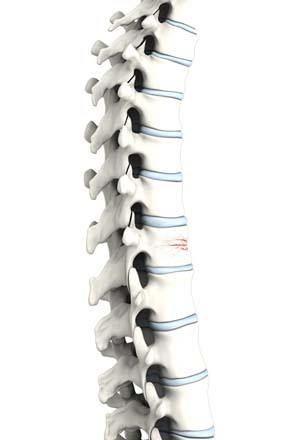
Thoracic vertebroplasty is a minimally invasive procedure performed to reduce or eliminate pain caused by vertebral compression fractures. It stabilizes the fracture and prevents further collapse of the vertebra, averting deformity.
Know More - Thoracic Discectomy

Coming Soon
Know More - Thoracic Spine Fusion

Coming Soon
Know More - Thoracic Nerve Compression

Thoracic nerve compression refers to a compressed nerve root in the thoracic region of the spine, also called the upper back.
Know More - Lumbar Laminectomy
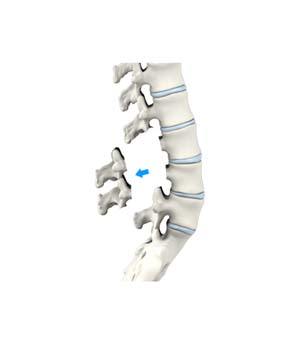
Lumbar laminectomy, also known as decompression laminectomy, is a spinal surgery performed to relieve excess pressure on the spinal nerve(s) in the lumbar (lower back) region.
Know More - Lumbar Foraminotomy
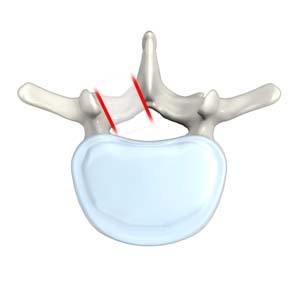
A lumbar foraminotomy is a surgical procedure that decompresses the spinal nerves by removing bone and other tissues that obstruct the neural foramen.
Know More - Lumbar Fusion
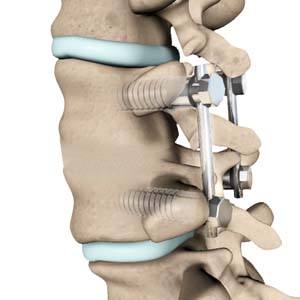
Lumbar fusion surgery may be performed to treat spondylolisthesis (slipping of the spine bones), degenerated discs, scoliosis or kyphosis (abnormal curvature of the spine), spinal infections or tumors, traumatic injury of the spine, recurrent disc herniation and unstable spine.
Know More - Lumbar Decompression
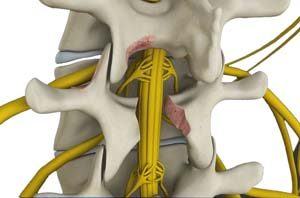
Lumbar decompression is a surgical procedure performed to relieve pressure over the compressed nerves in the lower spine (lumbar region).
Know More - Transforaminal Lumbar Interbody Fusion (TLIF)
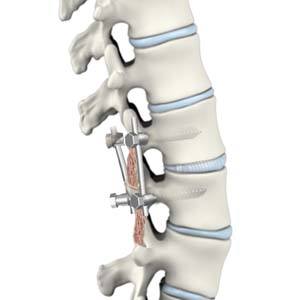
Transforaminal lumbar interbody fusion (TLIF) is a type of spinal fusion procedure in which bone graft is placed between the affected vertebrae in the lower back (lumbar) region through an incision on the patient’s back.
Know More - Posterior Lumbar Fusion

Spinal fusion, also called arthrodesis, is a surgical technique used to join two or more vertebrae (bones) within the spine. Lumbar fusion is the fusion the vertebrae in the lumbar portion of the spine (lower back).
Know More Launch Movie - Posterior Lumbar Interbody Fusion
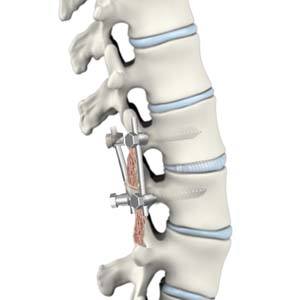
The fusion of vertebrae in the lumbar portion of the spine is called lumbar fusion. This surgery can be performed as an open or minimally invasive procedure.
Know More - Lumbar Endoscopic Discectomy
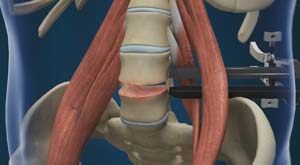
Lumbar endoscopic discectomy is a minimally invasive surgical procedure to treat a herniated or ruptured disc and relieve pressure on the spinal nerves.
Know More - Posterolateral Lumbar Fusion

Posterolateral lumbar fusion is a surgical technique that involves correcting spinal problems from the back of the spine by placing bone graft between segments in the back and leaving the disc space intact.
Know More - Lower Back (Lumbar) Surgery
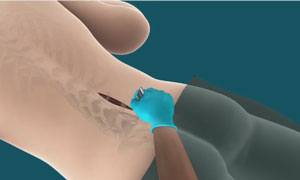
Lower back pain is one of the most common health problems experienced by most individuals, at different phases of their lives.
Know More - Lumbar Corpectomy and Fusion
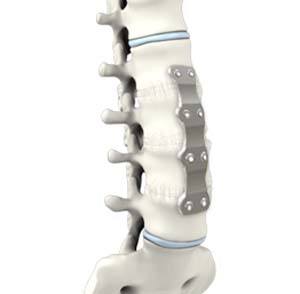
Lumbar corpectomy and fusion is a surgical technique performed to remove the vertebral bone or disc material between the vertebrae to alleviate pressure on the spinal cord and spinal nerves (decompression) in the lumbar (lower back) region.
Know More - Lumbar Facetectomy and Foraminotomy

Facetectomy and foraminotomy are the most common spinal surgical procedures recommended for chronic pain due to spinal nerve compression. Lumbar foraminotomy is a decompression surgery involving the removal of bone and tissue obstructing the neuroforamen to release the pressure on the spinal nerve roots.
Know More - Lumbar Interbody Fusion
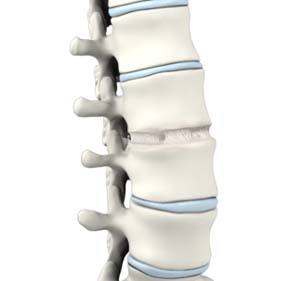
Lumbar interbody fusion (LIF) surgery is a surgical technique that involves the removal of a damaged intervertebral disc and the insertion of a bone graft into the disc space created between the two adjoining vertebrae.
Know More - Minimally Invasive Lumbar Discectomy
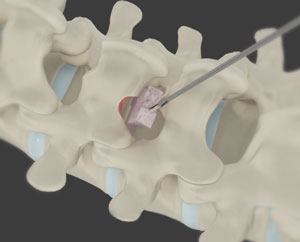
Lumbar discectomy is a spinal surgery that involves the removal of the damaged intervertebral disc(s) to relieve pressure on the spinal nerves (decompression) in the lumbar (lower back) region, which forms the lower portion of the spine and comprises of five vertebrae (L1-L5).
Know More Launch Movie - Anterior Lumbar Interbody Fusion

Anterior lumbar interbody fusion (ALIF) is a surgery performed to correct spinal problems in the lower back. The surgery can be implemented either as an open surgery or minimally invasive technique.
Know More Launch Movie - Minimally Invasive TLIF
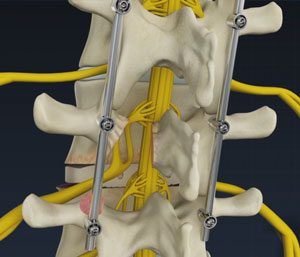
Transforaminal lumbar interbody fusion (TLIF) is a minimally invasive fusion of the vertebrae of the lumbar region (lower back). It is designed to provide stability to the spine and treat back and leg pain.
Know More Launch Movie - Lower Back Pain Surgery

Lower back pain can be disabling; however, most cases heal with time (2-12 weeks) and with conservative therapy.
Know More - Oblique Lumbar Interbody Fusion (OLIF)

Lumbar interbody fusion can be performed through different approaches. Oblique lumbar interbody fusion (OLIF) is a minimally invasive approach to LIF, where an incision is made on your side to avoid damaging important muscles and ligaments in your back.
Know More - Minimally Invasive Lumbar Decompression

Minimally invasive lumbar decompression or mild® is a procedure developed by Vertos Medical to treat lumbar spinal stenosis by relieving pressure on the spinal nerves.
Know More - Lumbar Discectomy

A lumbar discectomy is a surgical procedure performed to treat a herniated or ruptured disc and relieve pressure on the spinal nerves.
Know More - Lumbar Microdiscectomy

Coming Soon
Know More - Lumbar Microdecompression

Coming Soona
Know More - Spinal Fusion
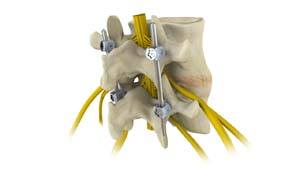
Spinal fusion is the surgical technique of combining two or more vertebrae.
Know More - Spinal Decompression
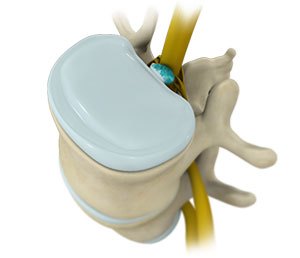
Spinal decompression is a treatment to relieve pressure on one or many “pinched nerves” in the spinal column.
Know More - Vertebroplasty

Vertebroplasty is a minimally invasive procedure performed to reduce or eliminate pain caused by a vertebral compression fracture. It stabilizes the fracture and prevents further collapse of the vertebra, averting deformity.
Know More Launch Movie - Laminectomy
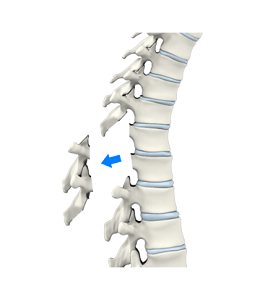
Laminectomy refers to the removal or cutting of the lamina (roof) of the vertebral bones to provide space for the nerves to exit from the spine. It can also be performed to relieve the symptoms of the narrowed spinal canal known as spinal stenosis.
Know More - Kyphoplasty
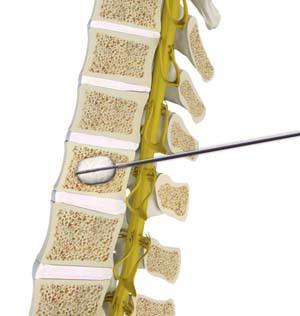
Balloon kyphoplasty is a spine surgery that relieves back pain caused by a vertebral compression fracture. The aim of balloon kyphoplasty is to relieve pain, stabilize the fracture and restore the vertebral body height.
Know More - Spine Deformity Surgery
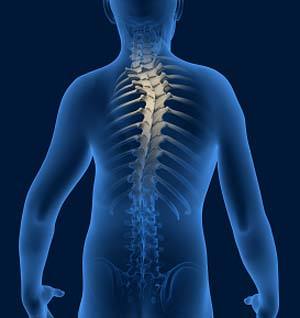
Spine deformity can be defined as abnormality in the shape, curvature, and flexibility of the spine. When the curves are exaggerated, pronounced problems can occur such as back pain, breathing difficulties and fatigue.
Know More - Minimally Invasive Spine Surgery
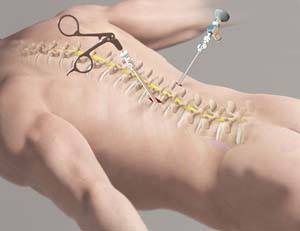
Minimally invasive spine surgery (MISS) is the latest technology available to perform spinal surgeries through small, less than one-inch-long incisions.
Know More - Endoscopic Spine Surgery

Endoscopic spine surgery is a minimally invasive spine surgery that uses specialized video cameras and instruments to remove the herniated disc through very small incisions.
Know More - Removal of Facet Joint Cyst

Facet joint cysts, also called synovial cysts, are benign, fluid-filled sacs that develop due to degeneration of the facet joints of the spine.
Know More - Spinal Tumor Surgery

A spinal tumor is an abnormal mass of tissue surrounding or found within your spinal cord and/or spinal column.
Know More - ExcelsiusGPS Robotic Navigation

ExcelsiusGPS® Robotic Navigation system is the latest technology designed to integrate the benefits of robotics and navigation into one platform to provide minimally invasive spine surgery and optimize patient care with improved accuracy and safety.
Know More - Surgery for Scoliosis

Surgery for scoliosis is recommended when the spinal curvature is severe and is either worsening or is a cause of severe pain or difficulty in breathing.
Know More - Spine Osteotomy
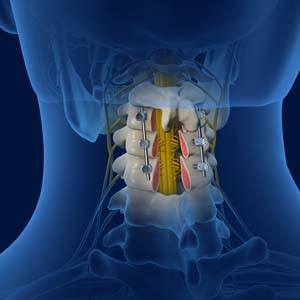
Spine osteotomy is a surgical procedure in which a section of the spinal bone is cut and removed to allow for correction of spinal malalignment.
Know More - Robotic Spine Surgery
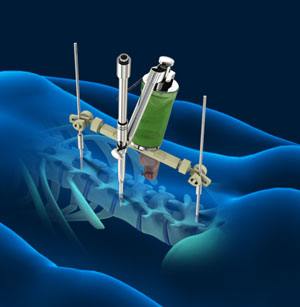
Robotic spine surgery is a procedure where your surgeon is assisted by a robotic system to perform surgery to the spine. Precision is very important when performing spine surgery. Robotic systems are becoming increasingly popular in the medical fraternity as it offers better precision and reduces the risk of complications associated with conventional surgery.
Know More - Fracture Stabilisation

Stable fractures may respond well to non-operative treatment such as the use of braces which immobilize the spine allowing it to heal. Complex fractures that are unstable require fracture stabilization surgery.
Know More - Spinal Infection Debridement

Spinal infections are characterized by back or neck pain, depending on the site of the infection, which gradually becomes severe and is not relieved by rest or medications.
Know More - Spinal Infection Decompression

Spinal infections can be caused by bacteria or fungi which reach the spine through the bloodstream. The most common causes of spinal infections are bacteria called Staphylococcus aureus and Escherichia coli (E. coli).
Know More - Spinal Infection Stabilisation

Spinal stabilization is surgery performed to rectify spinal instability that can result from infection. Also called spinal immobilization, it involves the installation of bone grafts and hardware (plates, rods, screws, hooks, and wires) to fuse the spinal segments after removal of the dysfunctional or unstable spinal segments.
Know More - Complex Spinal Surgery
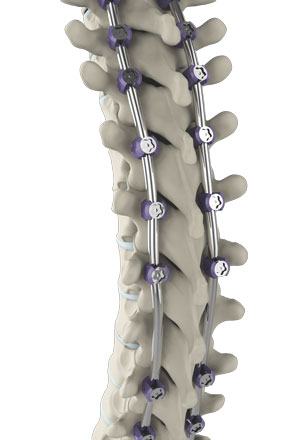
Complex spine surgery is a procedure that involves six or more vertebrae of the spinal column, requiring six or more hours of surgery to correct a spinal deformity. Complex spine surgery is very difficult to perform and demands the highest level of patient dedication to be successful.
Know More - Complex Spine Surgery

Complex spine surgery is a procedure that involves six or more vertebrae of the spinal column, requiring six or more hours of surgery to correct a spinal deformity. Complex spine surgery is very difficult to perform and demands the highest level of patient dedication to be successful.
Know More - Disc Decompression

Disc decompression surgery is considered when conservative treatments fail to relieve symptoms such as pain, numbness, and weakness; your doctor has identified the degenerated disc as the source of your pain, and you are healthy enough to undergo the procedure.
Know More - Outpatient Spine Surgery

Outpatient spine surgery is an operative procedure that does not require an overnight stay at the hospital.
Know More - Image-Guided Spine Surgery

Imaging techniques such as computed tomography and fluoroscopy may be integrated into the system to facilitate pre-operative planning of the surgery, where a series of images taken before the surgery are displayed on a screen, with which your surgeon matches his/her moves intraoperatively.
Know More - Tumour Decompression

Tumor decompression is a technique to relieve the pressure in your spine caused by the growth of cancer cells. This involves either partial or complete removal of the tumor.
Know More - Tumour Stabilisation

Tumor stabilization is a surgical procedure performed to strengthen and support your spine when it is weakened or in danger of breaking due to a tumor growth. It is typically carried out after a surgery called tumor decompression, which involves the removal or shrinking of the tumor.
Know More - Percutaneous Vertebroplasty

Percutaneous vertebroplasty is a minimally invasive procedure to treat fractures of the spinal vertebral bones.
Know More - Oblique Lateral Interbody Fusion (OLIF)

Percutaneous vertebroplasty is a minimally invasive procedure to treat fractures of the spinal vertebral bones.
Know More - Extreme Lateral Interbody Fusion (XLIF)

Coming Soon
Know More - Deformity Correction

Coming Soon
Know More - Scoliosis Fusion

Coming Soon
Know More - 3D Navigated Surgery

Coming Soon
Know More















